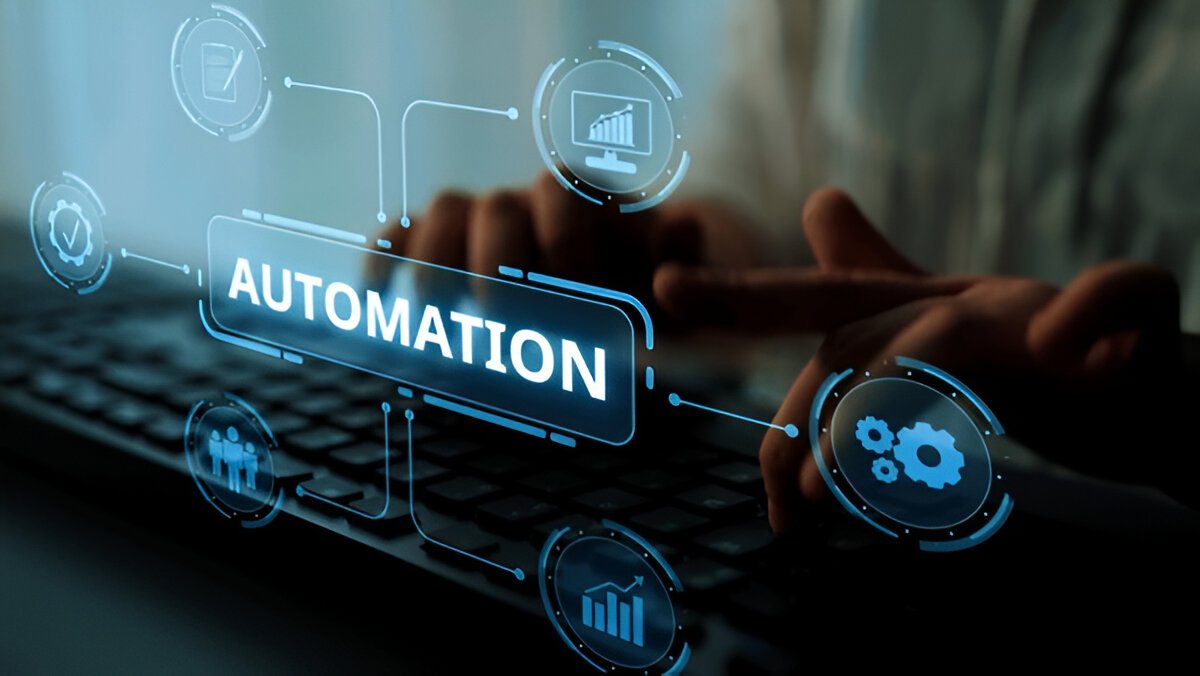AI Automation has emerged as one of the most significant factors transforming workplaces, industries, and the global work market in today’s fast evolving globe. Artificial intelligence (AI) and automated technologies are transforming the way labour is done in a variety of industries, including manufacturing, customer service, finance, and healthcare. Automation boosts production and efficiency, but it also creates issues with job displacement and the need for new skills.

AI Automation
Automation is the process of using technology to carry out jobs with little assistance from humans. This comprises software solutions that can manage repetitive or data-driven tasks, robotics, AI algorithms, and machine learning. At first, automation mostly impacted industrial employment like packing and assembly line labour. But new technology has brought automation to white-collar fields like marketing, accountancy, and even legal study.
Increased productivity is one of automation’s main effects. Machines can work around the clock without getting tired, which lowers operating expenses and human mistake. For companies, this translates into enhanced quality control and quicker production. For instance, in the automobile sector, robots now precisely do jobs like welding and painting, freeing up human workers to concentrate on creativity and design. Similar to this, AI-powered office software can handle data analysis, meeting scheduling, and invoice processing, freeing up staff members to focus on more strategic responsibilities.
But there are difficulties with this change. Many people worry that automation will result in job losses, particularly for manual or regular work. According to studies, as machines become more adept over the next few decades, millions of jobs could be in jeopardy. For example, among the most vulnerable positions are factory workers, cashiers, and data entry clerks. However, while automation eliminates certain employment, it also generates new ones, especially in the fields of technology, data analysis, and automated system maintenance. The evolving demands of contemporary enterprises are reflected in the emergence of new positions such as process analysts, AI trainers, and robotics technicians.
Additionally, the change highlights the significance of upskilling and reskilling. Employees must adjust by picking up new technologies and honing soft skills like creativity, emotional intelligence, and problem-solving that are difficult for computers to imitate. Through training programmes and lifelong learning initiatives, governments, educational institutions, and companies all play a crucial role in assisting people in adjusting to the new work environment.
It’s interesting to note that automation frequently alters employment rather than completely replacing them. Instead of being replaced, many vocations are being enhanced. For instance, medical scans can now be interpreted more quickly by doctors using AI techniques, but human judgement is still used to make the final diagnosis. Reporters concentrate on in-depth analysis, while AI may create basic news updates. Better results and increased efficiency are the results of this human-machine collaboration.
In conclusion, automation is a significant change influencing the nature of labour in the future; it is neither wholly a threat nor wholly an opportunity. Accepting technological advancements while educating the workforce for adaptation is crucial. Societies can guarantee that automation becomes a source of opportunity and prosperity rather than inequality by encouraging innovation, digital literacy, and ongoing learning. In the workplace of the future, people will collaborate with robots to accomplish more than ever before, rather than competing against them.
 Jobs Flame Your Career, Your Flame
Jobs Flame Your Career, Your Flame



